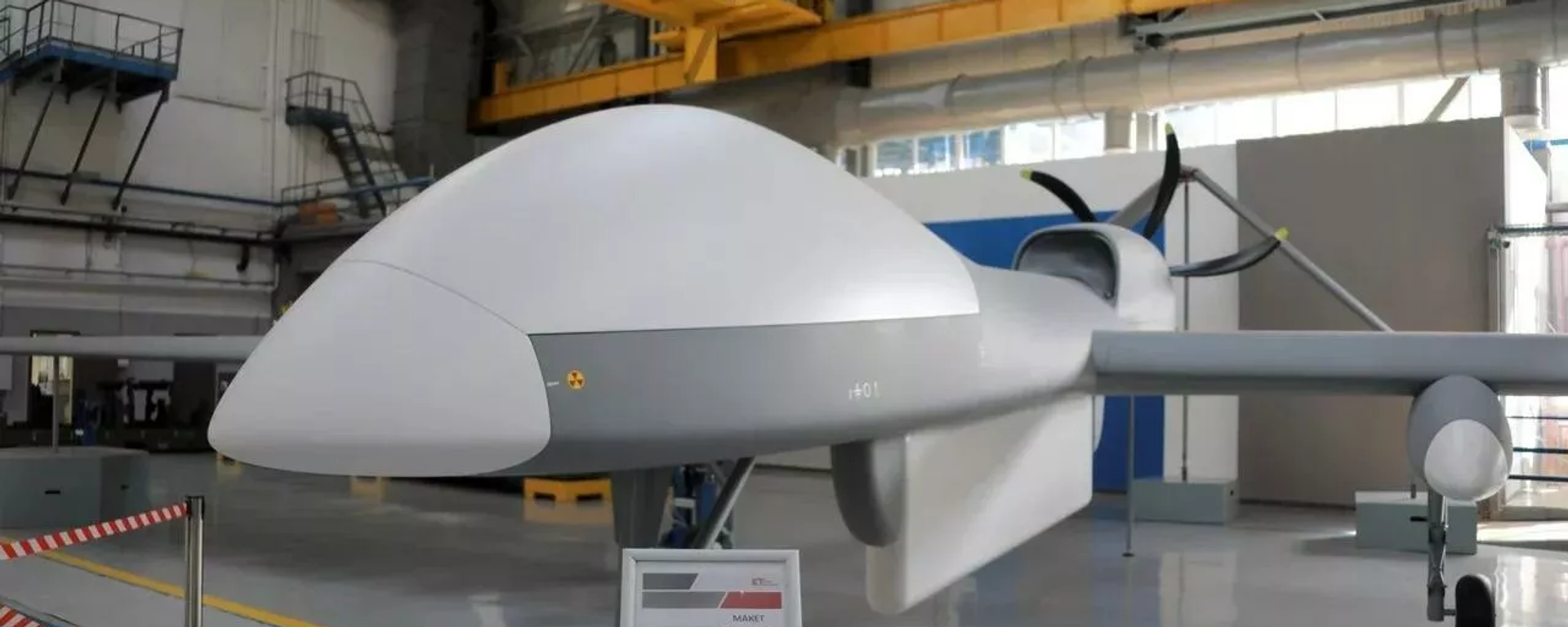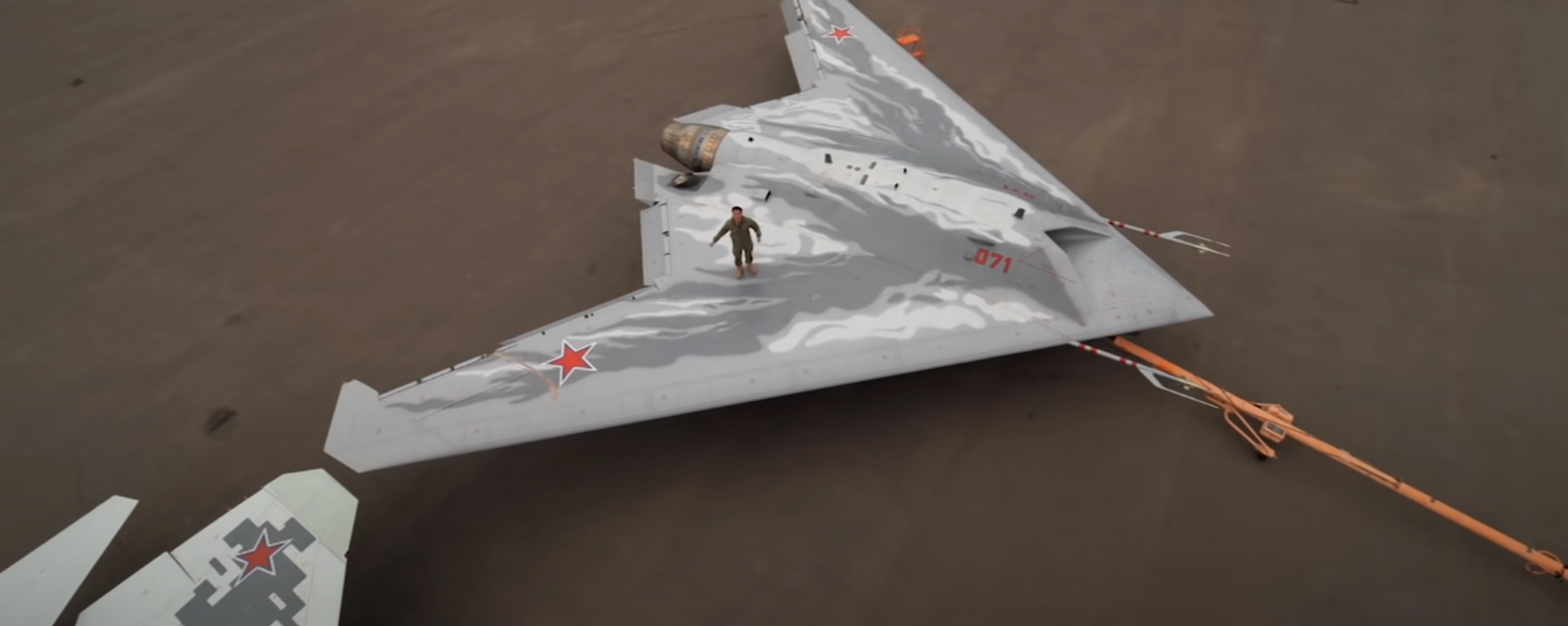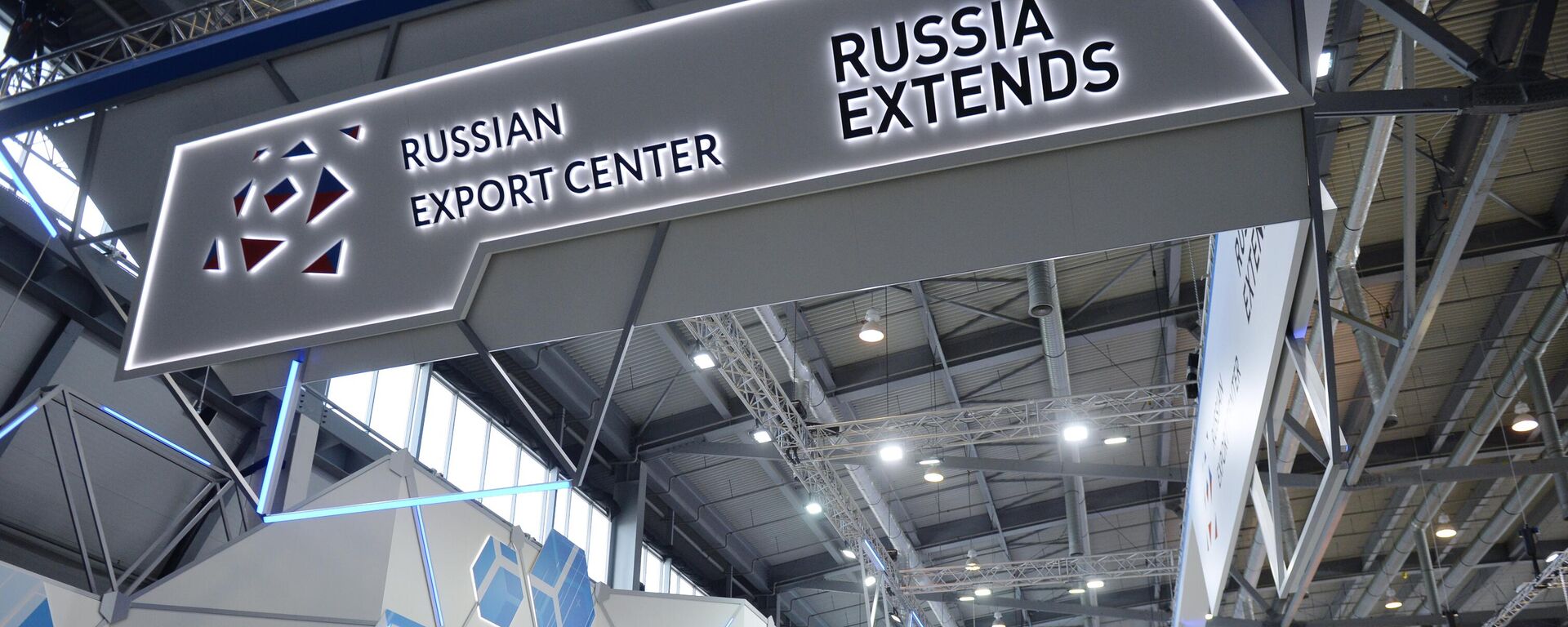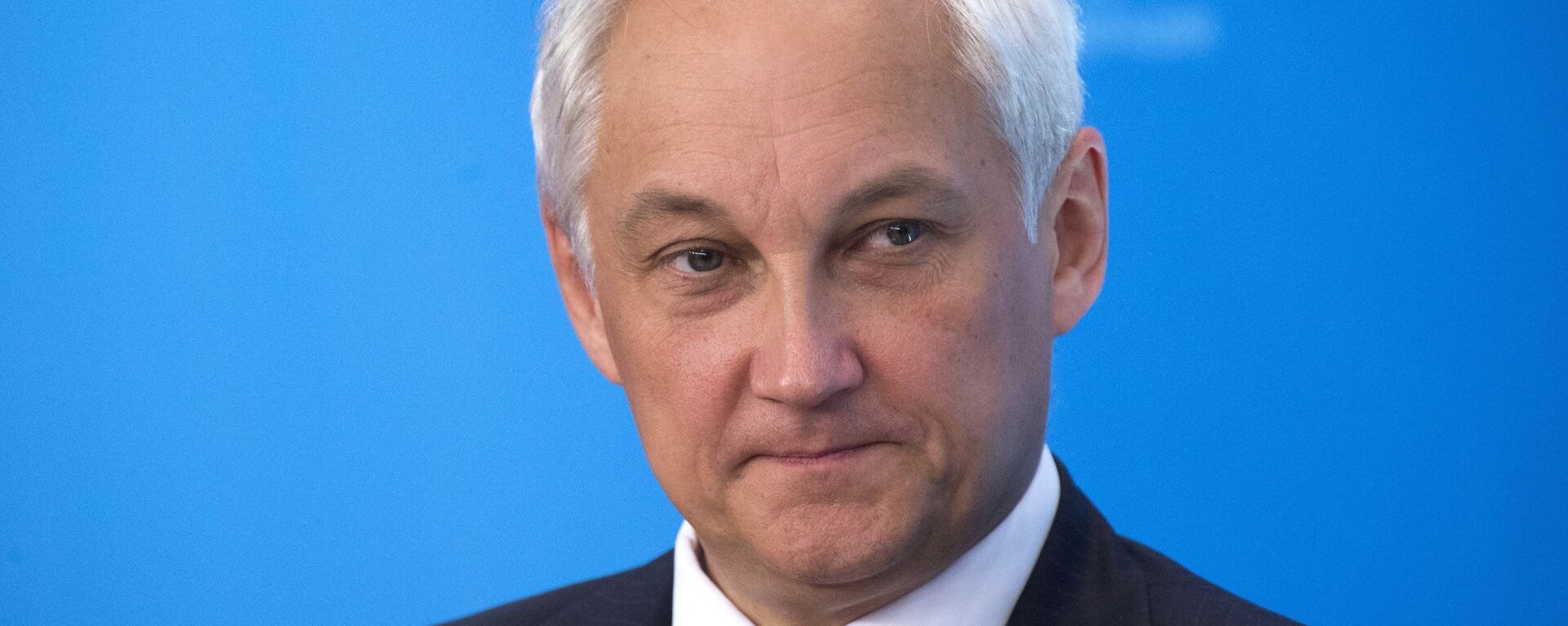Sky’s the Limit for Russia’s Drone Industry – Here’s Why
13:44 GMT 29.04.2023 (Updated: 14:20 GMT 29.04.2023)
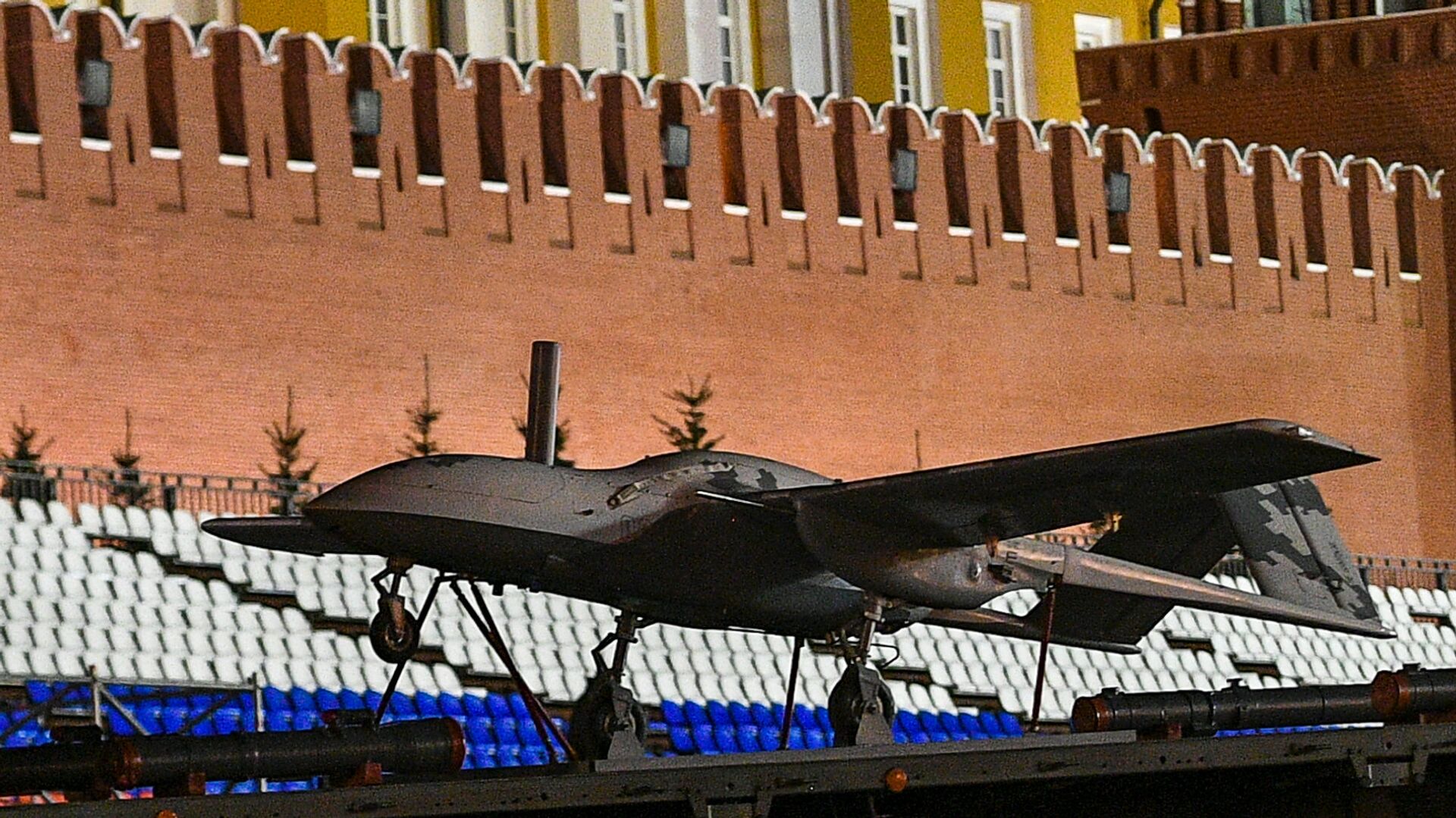
© Sputnik / Alexander Vilf
/ Subscribe
Until recently, notwithstanding a powerful military industry and over a century of experience in the construction of aircraft, Russia lagged behind world leaders on drone technology. Speaking to Sputnik, industry experts Eduard Bagdasaryan and Artyom Serebrennikov explained why that’s about to change.
Russian President Vladimir Putin announced a massive cash injection into Russia’s fledgling drone industry this week, estimating that one trillion rubles (or about $12 billion) will be invested into the sector in the near future.
“If all of us, including the state, work actively together, then a trillion rubles” will be invested, Putin said Thursday after touring the Rudnevo Industrial Park outside Moscow.
The Russian president said Russia has great potential in drone technology, emphasizing the need to assure technological sovereignty, and saying that the nation can no longer afford to “just import something,” but must “go one step ahead of our competitors.” Putin added that there are virtually no fields of human activity into which unmanned vehicles cannot be integrated and made useful.
Sky’s Literally the Limit
“If we’re talking about prospects, so-called aerial robotics or unmanned aerial systems have been promising, actively developing areas of industry and business in Russia and around the world since the early 2000s. According to experts, the market is growing by about 10 percent per year,” says Eduard Bagdasaryan, general director of JSC Aerocon, a Moscow region-based defense innovation enterprise. Bagdasaryan also serves as the vice president of Aeronet, a Russian association of UAV developers and operators.
Speaking to Sputnik about Russia’s potential in the global drone market, Bagdasaryan explained that it’s necessary to distinguish the market for military drones from the civilian UAV market, noting that while they are technologically related, “these are different spheres, and different markets.”
Russia, in the expert’s view, is presently “more successful in the civilian sphere than the military one, because the development of civilian UAVs was spurred on by the market, by consumers, and so private money was invested there.”
There are several reasons stimulating the development of the civilian sector, according to Bagdasaryan, including Russia’s vast geography, which facilitates the use of unmanned systems for a wide variety of purposes, from the monitoring of oil and gas pipelines, to remote sensing and topography, to the creation of 3D models of cities and the ecological monitoring of lakes, rivers, to engineering surveys of construction sites and high-rise building firefighting.
“In the area of civilian drones, we’re developing very well, young minds are actively moving into this field. This includes new projects, new functionality for drones, new features and wider functionality. We are doing very well in this regard, and are successful relative to the rest of the world,” the expert said.
As far as military drones are concerned, there are several good projects here as well, Bagdasaryan said. This includes the widely-produced 20-kg turboprop Orlan reconnaissance drone, plus a range of prospective projects by companies like Enix, Zala, Kronstadt Group.
JSC Sukhoi is working on the 20-ton drone, the Okhotnik (lit. ‘Hunter’) strike UAV. “Right now this is the largest and heaviest apparatus used in warfare in Russia,” Bagdasaryan noted. The Forpost-R (lit. ‘Outpost-R’) reconnaissance UAV, a copy of the Israeli IAI Searcher, is another drone manufactured for the Russian military, and which has also been actively used in the proxy war with NATO in Ukraine.
Import Substitution Down to the Last Bolt
Bagdasaryan emphasized that as far as military drones are concerned, Russia has to focus not just on manufacturing the UAVs, but “on the production and improvement of components including sensors, gauges, optics, matrix electronic systems, and the elemental base for radio-electronic systems.”
“That is, there are a lot of things like this, including carbon fabrics and binders. We are starting to do something in this direction, but for a product to be competitively priced, it must be produced on a large scale. The Russian market is insufficient to ensure mass production. For this we need a global market. This means creating conditions for business for the export of these products to the world market. Reforms are needed here so that it is profitable, convenient, fast and efficient for enterprises to trade without obstacles,” the expert noted. “But we are steadily growing in this direction, especially since this industry will now receive proper funding to provide companies with more opportunities.”
As far as countries where Russia can get its share of the global drone market is concerned, Bagdasaryan said this can include the countries of Africa, India and other developing nations.
No Time Like the Present
“Now is the perfect time to improve the production of drones, because they truly are capable of solving a vast amount of tasks, coping with situations where a human being is inferior in terms of speed or efficiency,” Bagdasaryan stressed. In dangerous professions, for example, drones provide human workers with an invaluable companion that can help perform dangerous work.
“The present is the right time to start doing this, because the special military operation has shown us that its time to switch to our own production in every area, and drones are no exception,” Bagdasaryan said.
The loss of Western markets and technologies has taught the state and private industry an important lesson on self-reliance. “Therefore I’m confident that everything is ahead of us. If we get our act together and start inventing things ourselves, we have fairly good potential to compete with our overseas colleagues.”
Important Aerospace Legacy
Artyom Serebrennikov, a commercial drone expert with Aerodyne Rus, a global firm specializing in inspection and site monitoring using UAVs, agrees with Bagdasaryan’s optimistic assessment on Russia’s potential, telling Sputnik that “Russia has always been and continues to remain an important aero and space power,” and that the country “undoubtedly has the technologies and specialists to develop and manufacture high-quality modern drones.”
“Yes, we have problems with materials, problems with some composite materials, problems with small motors, electric motors. We are capable of putting things together piecemeal, and haven’t managed to launch everything in series production. But I’m sure that these problems, with the right approach by the state and support for this industry, can be resolved fairly quickly. All the more so because we have companies that produce some really unique equipment that is also sold on foreign markets,” Serebrennikov said.
The commercial drone expert also pointed to another important area where Russia must strive to achieve independence – the software that goes along with the UAVs. “One of the main aspects [of the use of UAVs, ed.] is not just the production of the drones themselves, but the corresponding programs, the software – a set of software products…And here, of course, we also have a large potential for development,” he said.
“I would say that Russia is, in principle, ready for and has great potential to break into the drone race. We already have projects on the market that are very competitive at the global level, and some of them are successfully working abroad,” Serebrennikov said, pointing, for example, to drone-assisted geo-terrain modeling solutions by the St. Petersburg-based company Geoscan.
“That is, we have already partially entered the global drone race with individual projects. With a competent approach and state support, if everything continues to develop in our country in terms of unmanned systems, we will definitely be able to compete very seriously at the global level,” Serebrennikov summed up.
For more of Sputnik's exclusive analysis on the prospects of the Russian drone industry, check out our Telegram post here.

